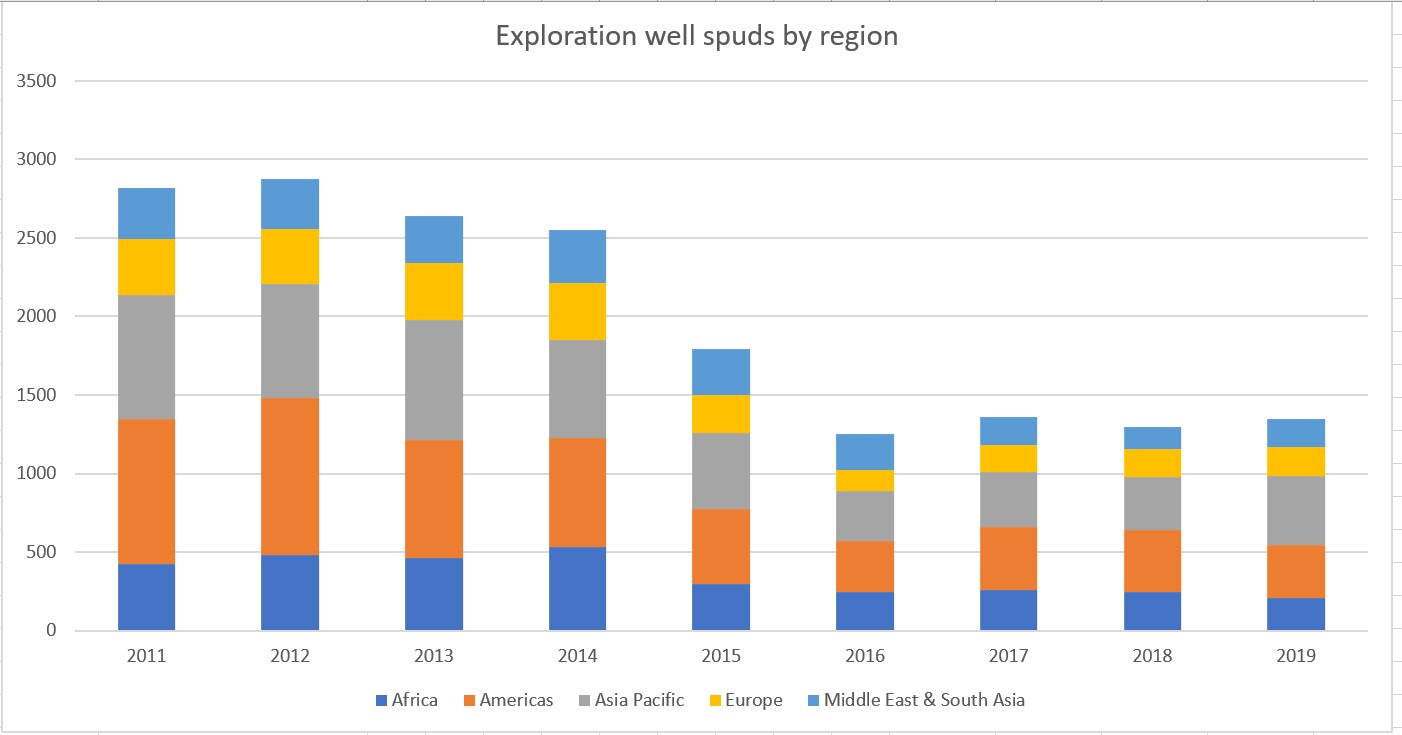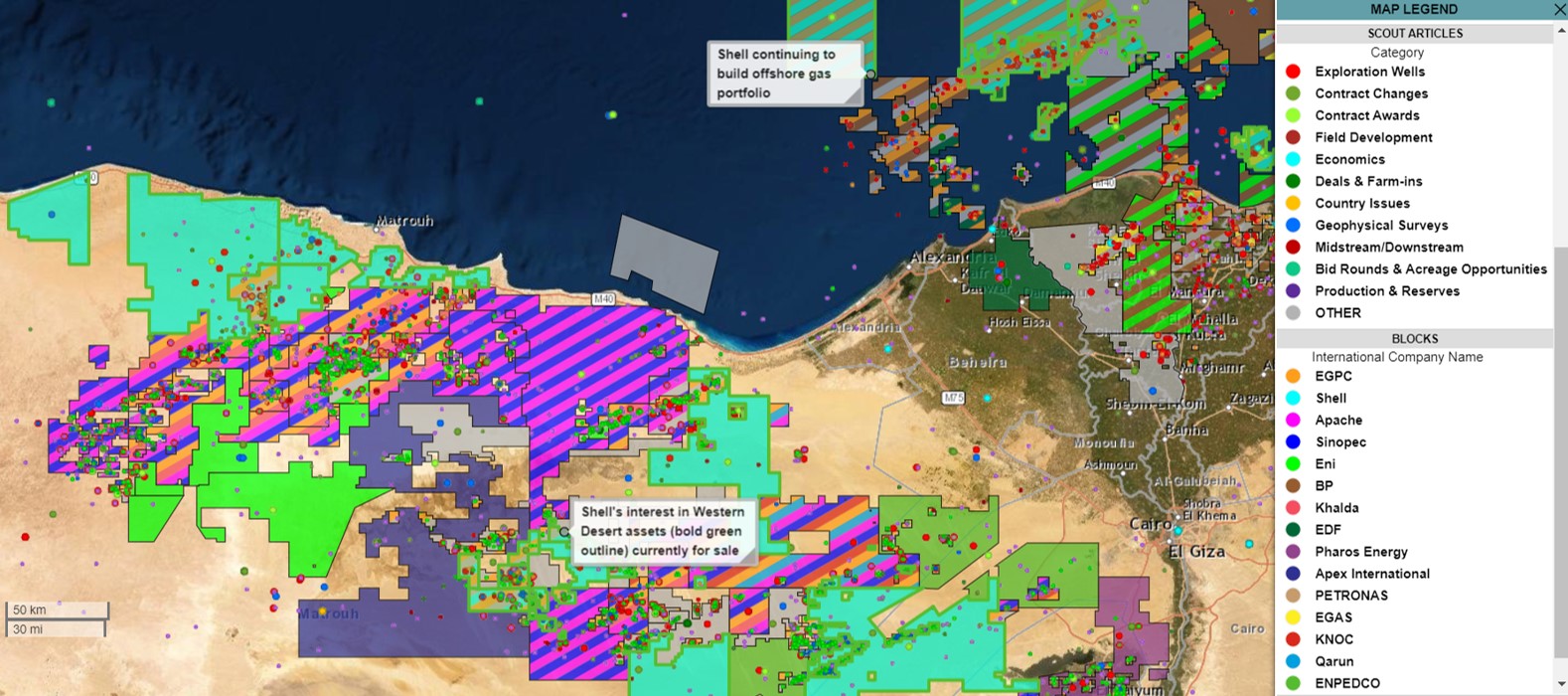“Dice are rolling, the knives are out … ”
Oil’s recent price implosion, resulting from the double whammy of OPEC’s early March failure to agree on further production cuts with Russia and demand destruction in the wake of the global coronavirus pandemic, has left the global oil & gas exploration business reeling. Subsequent OPEC++ cuts announced on April 12 did not exactly bring much relief in the near term. They are unlikely to keep up with plunging demand—thought to be down as much as 20 million barrels of oil per day or more—and uncertainty will likely continue to plague the industry. Companies weakened by what were already low commodity prices and huge debt costs are now fighting to survive. Not all of them will.
In this series, we won’t highlight those about to be eaten, but rather will focus on the sharks in the water: companies with solid balance sheets, long-term growth strategies, and cash to spend on acquisitions from stressed rivals.
With the belief that oil prices must rebound, eventually, these stronger companies are already filling their coffers by selling debt, allowing them to go shopping with that relatively cheap money rather than using proceeds from farmouts and divestments. ExxonMobil took advantage of the recent rate cut and raised cash after canceling its U.S. Gulf of Mexico divestment program. Equinor raised $5 billion in early April through debt offerings and further bolstered its cash reserves by canceling share buybacks and slashing various investments, including U.S. onshore drilling programs. BP, Total, Shell, and even Austria’s OMV also raised money similarly in the last few weeks. But for companies with less robust balance sheets, debt will not be an option, and many will be forced to sell assets at unfavorably low prices to those who simply have bigger teeth.
We anticipate a continued increase in the Asia Pacific region’s share of exploration activity, at the expense of the Americas and Europe (Figure 1). Opportunistic buying will similarly concentrate in the Asia Pacific and Africa regions, driven by a combination of hydrocarbon-friendly regimes, reasonable political stability, local demand growth, and recent discovery trends.

For our company-by-company analysis, we’ve broken our shiver of sharks into four main categories: supermajors, large independents, NOCs/ex-NOCs, and others. We’ll begin by focusing on a handful of supermajors we see potentially leading the way, starting with Shell.
Shell
Shell’s financial strength and consistent appetite for costly but profitable exploration should have it on the hunt. In Brunei, where the company is literally part of the history of oil & gas development, Shell picked up Total’s operatorship in Block CA-1 in early April 2020. The block is located southwest of Total’s Tepat 1 discovery well in Malaysia’s Baram Delta Basin Deepwater Block N. The Tepat 1, which was plugged and abandoned in March 2018, may have encountered up to 100 meters of gas and 50 meters of heavy oil potentially within the “Cycle II” Upper Oligocene-Lower Miocene carbonate reservoir and caught Shell’s expert eye as indicative of new regional potential. Look for Shell to continue building its position here.
In the eastern Arabian Peninsula, where it has a longstanding exploration history, Shell and non-operated partner Total (25%) are still awaiting ratification of their 2018 awards in Oman’s Greater Barik area, pending finalization of an Exploration and Production Sharing Agreement (EPSA). Focusing on gas development, the four blocks (10/10B/11/11B) total 4,010 square kilometers and lie largely in the Ghaba Salt Basin, where Shell-managed PDO encountered gas in several exploration wells over the last 30 years.
Shell was also awarded 100% interest in Block 55 (Kahil) in the South Oman Salt Basin in October 2019, following the block’s relinquishment by Petrogas a year and a half earlier after three unsuccessful exploration wells. Under the terms of Shell’s agreement, total investment in the block will be around $65 million in G&G studies, seismic acquisition, and exploration drilling, with oil as the main target. Shell seems to have plenty to do in Oman right now and is unlikely to tack on more assets any time soon.
In October 2019, Shell announced its intent to sell its entire Egypt Western Desert asset base (Figure 2). As of mid-April 2020, one international consortium and an Egyptian entity were said to have been invited to join the second round of bidding. The asset sale was flagged by Shell as part of a strategic re-focus on its offshore gas activities in the Egyptian Mediterranean (western Nile Delta), where the company has been carrying out an approximately $1 billion exploration and development drilling program and where we think any additional African acquisitions by Shell are most likely to occur.

Finally, Shell must be looking at ways to replenish its reserves in northern Europe, where it sold a large package of U.K. continental shelf (UKCS) assets to Chrysaor in 2017 and faces additional reserves write-offs at Groningen field, where the Dutch government ordered gas production to end in 2022 because of induced seismicity. Though it has been fairly conservative in Norway and the U.K. in the last few years, Shell’s likely acquisition targets lie in the Norwegian Sea and West of Shetland (near Schiehallion and Clare fields), where it has remained relatively keen.
Here, at the end of each Sharks blog installment, we open it up to you. What do you think? Whom would you see as the predators if a feeding frenzy ensues? What have we missed or gotten wrong in your opinion? Fancy a look at our just-released Q1 activity maps? Our team of 27 international scouts, boasting more than 400 combined years of experience, is willing and eager to engage with customers—and future customers—on these topics and more!
Come back next week for our thoughts on the biggest fish in the water: Total.
Download the complete article below for a deeper dive with these sharks in the water.







